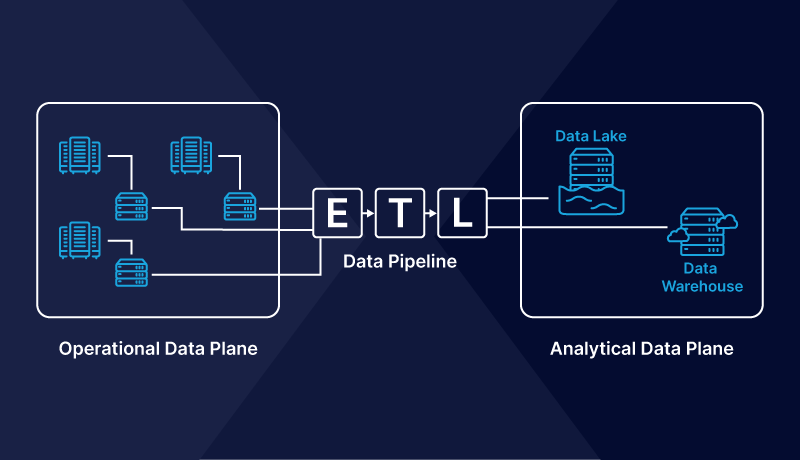Hello!
 More and more businesses today are starting to realize the true potential of becoming data-oriented businesses. Automated, data-driven decision-making can help companies accelerate their businesses at an unprecedented pace. They’re able to understand customer behavior better, predict market trends and capitalize on it by reducing operational costs.
More and more businesses today are starting to realize the true potential of becoming data-oriented businesses. Automated, data-driven decision-making can help companies accelerate their businesses at an unprecedented pace. They’re able to understand customer behavior better, predict market trends and capitalize on it by reducing operational costs.
While the role of data in transforming business cannot be denied, there seems to be a mismatch between the volumes of data being collected and gain in genuine insights into user behavior. Despite spending large sums of money on data processing platforms, they’re failing to see any discernable difference.
This has necessitated a major overhaul in the field of data sciences and the creation of the current generation of data product architecture like a data mesh. What were the intrinsic problems with the older systems that prompted such a drastic step?
What Were Some Of The Older Designs Of Data Platforms?
Before one can go ahead with analyzing the problems with the traditional systems of data processing, it’s imperative to understand a little about how they function. What were some of the older models of data management?
1) Data warehouse
 This is considered to be the first generation of data platforms that were designed to house large amounts of data from a variety of sources in one place.
This is considered to be the first generation of data platforms that were designed to house large amounts of data from a variety of sources in one place.
Such data helped companies gain insight into their respective businesses and take the right decisions accordingly. It also helped in building a historical record that could be accessed by data scientists to make accurate predictions. Data warehouse architecture was perfect for simple business activities like drafting a sales report or monitoring sales across regional branches, etc.
2) Data lake
A data lake was a major step up from the first generation of data processing platforms. It envisaged a centralized system of data management where all the data aggregated could be stored in a single repository. A data lake differed from the data warehouse, both in terms of its data quality and the utility of using a myriad of analytical tools like SQL or Python.
What Were The Issues Then?
Now that one has a basic understanding of such systems work, it’s easier to recognize their pitfalls and grasp why a newer model of data management was needed. Some of those concerns include:
A centralized system of data aggregation
 Like it was discussed earlier, a data lake functions by utilizing a single, large repository for storing all of its data. This makes sense for smaller organizations that deal with slightly lesser volumes of data. But, it might prove to be detrimental in the long run for larger corporations that have tens of different domains and continually proliferating data sources. End users are going to have a tough time accessing the data they need as they’ll need to run through the extra step of routing the information through a central data lake first. Time is of the essence and when an integral chain in the process of decision-making is broken or interrupted, productivity inevitably takes a hit.
Like it was discussed earlier, a data lake functions by utilizing a single, large repository for storing all of its data. This makes sense for smaller organizations that deal with slightly lesser volumes of data. But, it might prove to be detrimental in the long run for larger corporations that have tens of different domains and continually proliferating data sources. End users are going to have a tough time accessing the data they need as they’ll need to run through the extra step of routing the information through a central data lake first. Time is of the essence and when an integral chain in the process of decision-making is broken or interrupted, productivity inevitably takes a hit.
A hyper-specialized system of data ownership
Another intrinsic fallacy with the older systems of data management can be traced back to how the individual teams are structured and responsibilities are shared. The usual case is that a group of highly-skilled data engineers is left to build and sustain the functioning of a single data platform. Sure, they come in with a lot of technical expertise, but they lack the basic knowledge of how a business works and an understanding of the domain they’re working on. This leads to a general lack of accountability and lapses in communication among the different domains within the business.
How Does A Data Mesh Look To Rectify These Problems?
 One only needs to look at the core principles of a data mesh to understand how it solves the issues with its predecessors. The foundational tenets of a data mesh architecture include:
One only needs to look at the core principles of a data mesh to understand how it solves the issues with its predecessors. The foundational tenets of a data mesh architecture include:
-
A decentralized system of data ownership
This is one of the foundational pillars of a data mesh architecture.
It puts forth the concept of a domain-oriented system of data ownership where the individual domains that make up the business are each responsible for ensuring its smooth functioning. This contributes to increased accountability as every member of a domain is committed towards its success, and hence the entire firm as a whole.
-
Data as a product
This refers to a series of measures geared towards ensuring maximum customer satisfaction by envisioning data as a product. The capabilities that are addressed include discoverability, understandability, and trustworthiness among others.
-
Self-serve data platform
A self-serve data platform goes in conjunction with a decentralized system of data management to ensure complete domain autonomy. A data mesh architecture sees the creation of advanced infrastructure to complement the ambitious visions of individual domains.
 Also read:
Also read:
- Prepare Yourself Mentally Two New Residences in Turkey Worth Investing in
- Top 10 Trending Technologies You should know about it for Future Days
- Boss uses the same two-step ‘confidence’ test in every interview and won’t hire anyone who fails
Conclusion
A centralized system of data processing that is run by a group of hyper-specialized groups of data engineers is at the heart of conventional forms of data management portals. A data mesh looks to overcome the issues inherent to these platforms by envisioning a decentralized system of data ownership wherein the smallest unit of authority is a domain.
Thank you!
Join us on social media!
See you!






